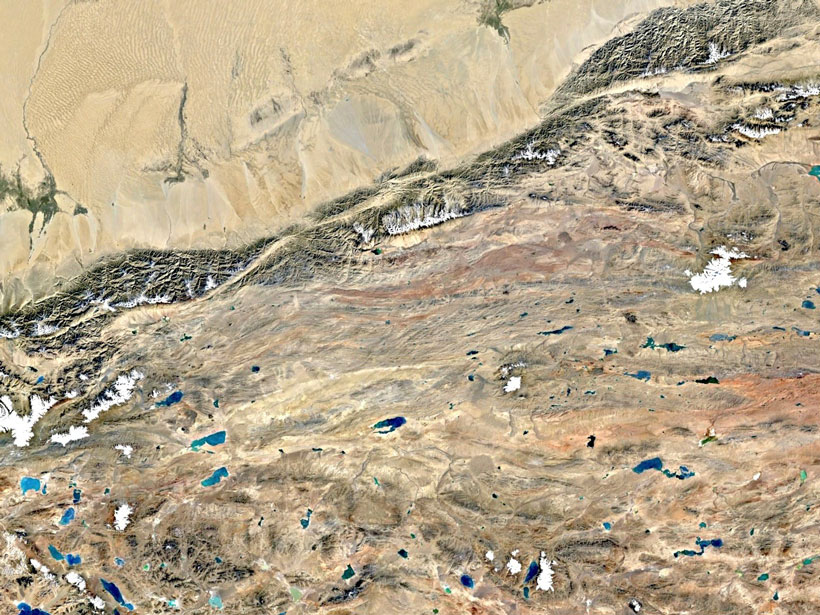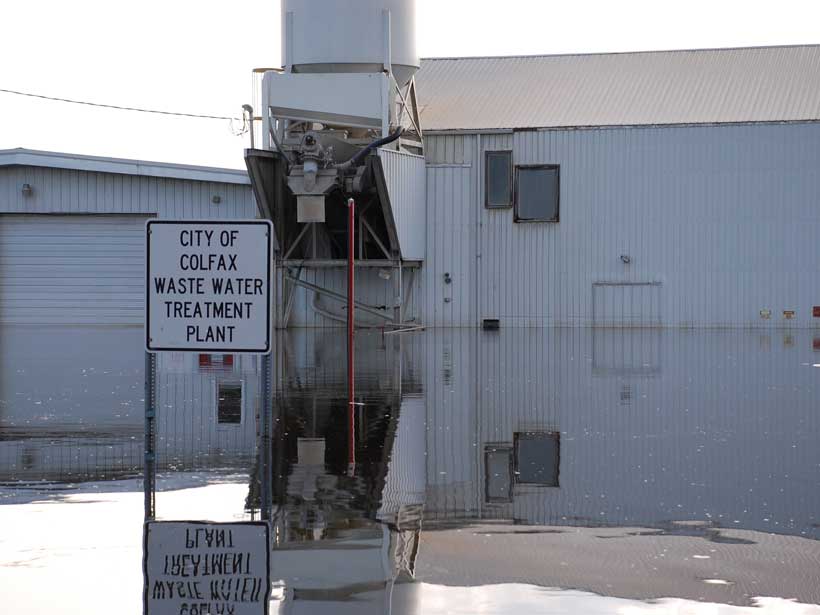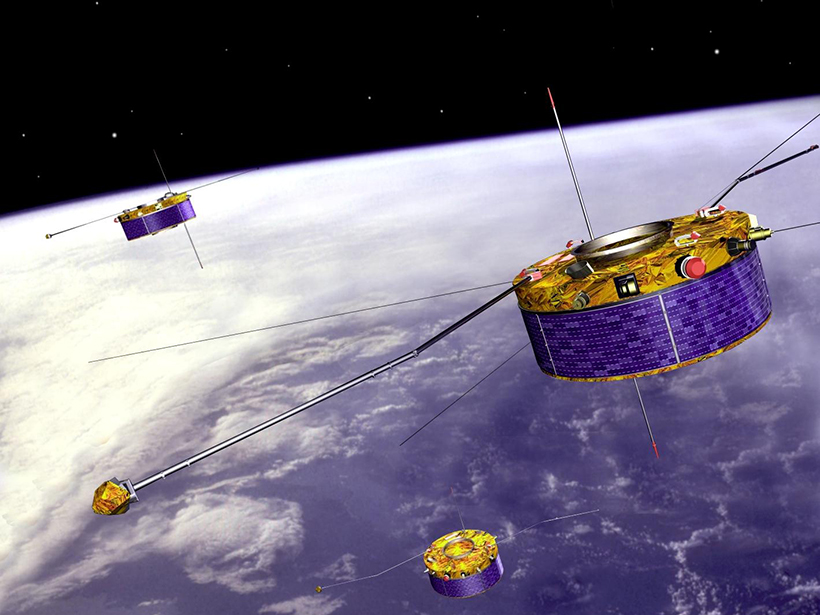A new special issue of JGR: Oceans reveals the rich relationship between the ocean and tropical cyclones.
Hazards & Disasters
New Insights into Continental Deformation in Northwestern Tibet
A new surface velocity map shows strain localized along major strike-slip features, suggesting the central Tibetan Plateau is not deforming as a fluid in response to gravitational collapse.
White House Seeks Input to Update Space Weather Strategy
Space weather can affect many technologies and infrastructures that society relies on. The White House seeks public input to inform the next steps to better prepare the Nation for this hazard.
Satellite Data Archives Reveal Unrecorded Himalayan Floods
Almost 30 years’ worth of Landsat observations created a comprehensive inventory of catastrophic floods caused by glacial lakes bursting through their rock dams.
Sea Level Rise Threatens Hundreds of Wastewater Treatment Plants
Untreated sewage could affect 5 times more people than direct flooding, a new study shows.
Improving Tropical Cyclone Predictions in the Gulf of Mexico
The National Oceanic and Atmospheric Administration’s newest High Resolution Atmospheric Model captures the influence of intraseasonal oscillations on tropical cyclone activity.
Understanding the Effects of Anthropogenic Space Weather
A large plasma hole generated by the vertical launch of the Formosat-5 satellite created temporary navigating and positioning errors of up to 1 meter, according to a new study.
Harnessing Remote Infrasound to Study Volcanic Eruptions
Data from the 2015 eruption of Chile’s Calbuco volcano suggest the international network built to monitor nuclear explosions may also be used to detect and characterize volcanic activity.
How Space Storms Affect the Satellite Superhighway
A powerful numerical model reveals how space weather disturbs magnetic field at geosynchronous orbit.
New Simulation Supports Chicxulub Impact Scenario
Mountains ringing the center of Earth’s most famous impact crater consist of porous rocks. Computer models of the impact can now predict those rocks’ microstructure.










